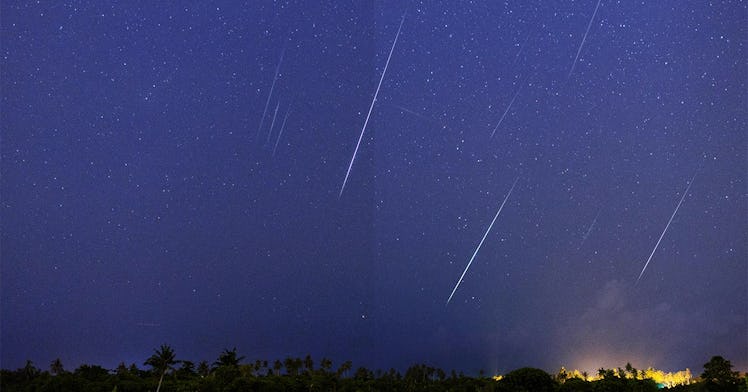The Elusive Draconid Meteor Shower is Coming — Here’s How to Catch It
The Draconid meteor showers are famously here for a good time, not a long time.

The end of the summer is here. As hot, languishing months turn into crisper and shorter days, as kids head back to school and football returns, new sky events are on the horizon — including a Harvest Moon tonight, the Fall Equinox is in just a few days, and before you get too relaxed, one of the most elusive meteor showers there is.
In early October, you will have the opportunity to see the Draconid Meteor Shower, which is different than many other meteor showers because it is one that is here for a good time, not a long time. Here’s how to make sure you don’t miss the Draconic meteor shower, a fairly short meteor shower that occurs in early October each year, whose meteors come from the comet Giacobini–Zinner.
When Is the Draconid Meteor Shower?
Oftentimes, you have to be up way past your bedtime in order to see meteors flying through the sky, which is tough if you’re trying to teach kids about the beauties of the great beyond, but one of the best things about this particular meteor shower is that it is expected to be most active in the early evening, meaning it’s ultra family-friendly.
Just around nightfall on October 8, you should be able to see the meteors and, if we’re lucky, you may also get to see a few in the nights leading up to it and maybe even a night or two after. That makes it a shorter meteor shower than events like the ultra-rare Leonids, which can last an entire month, for example.
How Do I Make Sure I See It?
The best way to ensure you get a quality look at the meteor shower is to head to a place that is dark, and ideally somewhat isolated so that artificial light doesn’t hinder your view of the sky.
And while the Draconid’s awesome name comes from the fact that the meteor shower occurs near the head of the constellation Draco the Dragon in the northern sky, you don’t have to locate it in order to see the meteors. But if you are looking for it, it’s between the Big Dipper and the Little Dipper, making it fairly easy to find.
Anything Else?
This is not a very active meteor shower. In fact, experts believe there will only be about five visible meteors per hour, even at Draconid’s peak. But according to EarthSky, “[i]n rare instances, fiery Draco has been known to spew forth many hundreds of meteors in a single hour.” So maybe we’ll all get lucky this year and get to see the October sky filled with totally badass meteors soaring by.